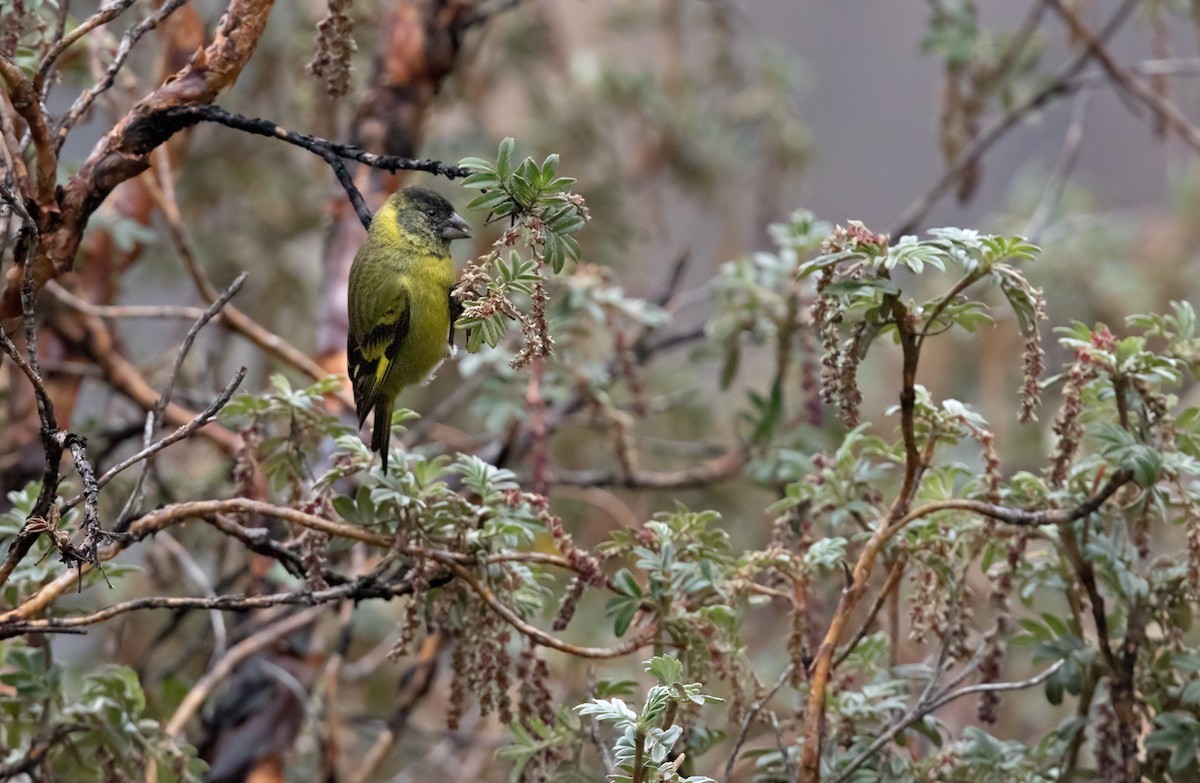Thick-billed Siskin
A species of Siskins and new world goldfinches Scientific name : Spinus crassirostris Genus : Siskins and new world goldfinches
Thick-billed Siskin, A species of Siskins and new world goldfinches
Botanical name: Spinus crassirostris
Genus: Siskins and new world goldfinches
Content
Description General Info
 Photo By Lars Petersson
Photo By Lars Petersson Description
The thick-billed siskin has an adult length of between 13.5 and 14 centimetres (5.3 and 5.5 in). The bill often has a silvery base and is noticeable thicker than other related siskins. The male closely resembles the hooded siskin (Spinus magellanicus) and has a black head and throat, greenish-yellow upper parts (sometimes streaked with dark markings) and bright yellow underparts. It differs from the hooded siskin in having a whitish-grey midbelly. The immature male has a black head but is otherwise less conspicuous than the mature male, being more greyish-olive above and greyish below. The female is similar but lacks the black head and is altogether much duller in appearance, more greyish-olive, with paler underparts. 
Size
14 cm
Nest Placement
Tree
Feeding Habits
Thick-billed Siskin primarily feeds on seeds, buds, and shoots of Polylepis trees, especially during the breeding season. Thick-billed Siskin forages acrobatically, often hanging upside-down, and is known to feed in pairs, small groups, or large mixed-species flocks.
Habitat
The habitat of thick-billed Siskin encompasses montane Andean steppes, with a preference for areas abundant in Polylepis shrubs and dispersed woodland. These birds are typically found in regions with short or stunted trees, as well as on brush-covered hillsides. In broader geographical terms, thick-billed Siskin is associated with shrublands on arid slopes near rivers, principally within the Andean mountain range.
Dite type
Granivorous
General Info
Feeding Habits
Bird food type
Distribution Area
This bird of the high Andes ranges from western Peru and central Chile to northwestern Argentina. Its altitudinal range is 3,000 to 4,000 metres (10,000 to 13,000 ft) in the northern part of its range but descends to 2,100 metres (7,000 ft) further south. Typical habitat is Polylepis woodland and open country with scrub. 
Species Status
S. crassirostris is an uncommon species with a patchy distribution within its range. However, it has a very wide range and the population seems stable so the International Union for Conservation of Nature has rated it as being a least-concern species. 

 Photo By Lars Petersson
Photo By Lars Petersson